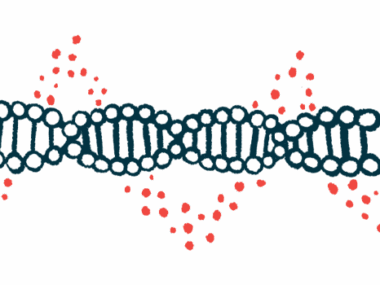Study: Children with SCD at risk of severe obstructive sleep apnea
Risk is present even for SCD pediatric patients of normal weight
Written by |

Children with sickle cell disease (SCD) might be at risk for severe obstructive sleep apnea (OSA) even if they’re a normal weight, according to a study.
This contrasts with obesity being a widely known risk factor of OSA in the general population. OSA occurs when the natural relaxation of the muscles that surround the throat during sleep obstructs the upper airways and reduces or interrupts breathing, interfering with sleep quality. In severe cases, pediatric OSA may lead to long-term health consequences, such as cardiovascular disease and behavioral and cognitive problems.
“This study supports the increased vigilance for OSA in clinicians caring for children with SCD,” the researchers wrote in “Pediatric Obstructive Sleep Apnea and Sickle Cell Disease: Demographic and Polysomnographic Features,” published in The Laryngoscope.
SCD is caused by mutations in both copies of the HBB gene, resulting in a faulty version of hemoglobin, the protein red blood cells use to carry oxygen.
Some patients have both mutated HBB copies producing a version of hemoglobin called hemoglobin S (HbSS subtype), while others carry a HBB copy that produces hemoglobin S and another that produces hemoglobin C (HbSC subtype), another faulty form of the protein. HbSS is typically more severe.
The resulting faulty hemoglobin makes red blood cells assume a sickle-like shape, impairing their ability to pass through small blood vessels and leading to blockages that can restrict blood flow and oxygen delivery to tissues.
Studies have indicated a higher prevalence of OSA in children with SCD, between 10-40%, compared with the general pediatric population (2%). This can be due to an abnormal growth of the tonsils — frequently reported in children with SCD — which can contribute to airway block during sleep.
“Children with SCD and OSA, compared to those without OSA, have higher rates of SCD-related [worse health] and complications, such as pneumonia and acute chest syndrome,” the researchers wrote. “Given the increased risk of complications, and the potential for improved outcomes with intervention, there is a need for studies utilizing objective data using PSG [polysomnography] to diagnose and quantify OSA in children with SCD.”
Polysomnography is a sleep test that measures the brain waves, oxygen levels in the blood, heart and breathing frequency, and eye and leg movements during sleep.
Comparing children with SCD, OSA with general population
Researchers at the Children’s Medical Center Dallas compared the demographic, clinical, and PSG characteristics of children with SCD and OSA with those of the general pediatric population. A total of 89 children with SCD and 192 without it who were referred for PSG at the same center were included.
In both groups, the mean age was 6.8, but the SCD group mostly consisted of girls (55%), while the non-SCD group was mostly boys (56%). Children with SCD were nearly all African American (96%), whereas those without SCD were mainly Hispanic (53%).
A significantly greater proportion of children with SCD had normal weight than those without SCD (73% vs. 33%) and obesity was significantly more frequent in the non-SCD group than the SCD group (52% vs. 13%).
The proportion of children without OSA was similar between the two groups (5.6% with SCD and 4.7% without SCD), PSG data showed. The children with SCD had significantly fewer apnea (breathing cessation) or hypopnea (reduced airflow) episodes per hour than those without SCD (13.6 vs. 22.4 on average), however.
More children without SCD had severe OSA (67.2%) — a mean of 10 or more apnea/hypopnea episodes per hour — than those with SCD (42.7%). This might be due to a higher proportion of obese children in the non-SCD group, which is a known risk factor for OSA severity in children, the researchers noted.
The children with SCD spent a greater percentage of sleeping time with lower than normal blood oxygen levels than those in the non-SCD group (10.5% vs. 3.5%), however. Considering the lower number of apnea/hypopnea episodes in the SCD group, it’s likely that SCD-related factors contributed to the low oxygen levels observed during sleep.
Most of the children with SCD (84%) had the HbSS subtype, while 15% had the usually milder HbSC subtype.
Those with HbSC had more severe OSA than those with HbSS (mean of 26 vs. 11.5 apnea/hypopnea episodes per hour). The time spent below normal blood oxygen levels was not significantly different between the groups.
Although these results contradict previous findings, the study was limited by a low number of children with HbSC (13) versus HbSS (75), the team noted.
Moreover, the likelihood of children with SCD having severe OSA was found to lower with increasing age, considering that those with severe OSA were significantly younger than those with moderate OSA (5.5 vs. 7.7).
“As age is a well-established predictor of OSA severity in the general population, our study adds further light to its association with OSA in a population of patients with SCD,” the researchers wrote, adding that their findings illustrate that “children with SCD are at risk for severe OSA although they may be of normal weight, which departs from the widely known risk factor of obesity in the general population.”
“A lower threshold for screening could be considered in younger children with SCD and the HbSS genotype, particularly because this group may be of normal weight yet still be at risk for severe OSA,” they said.






